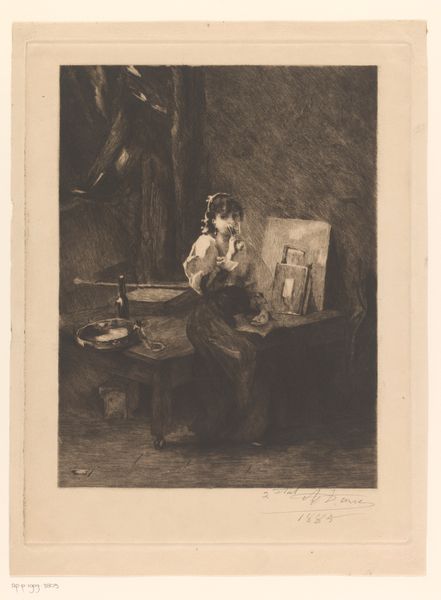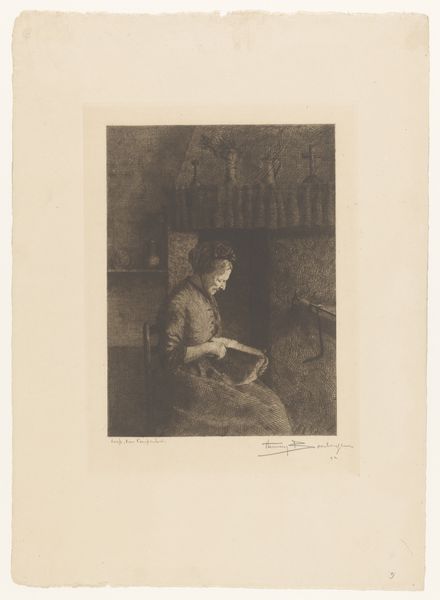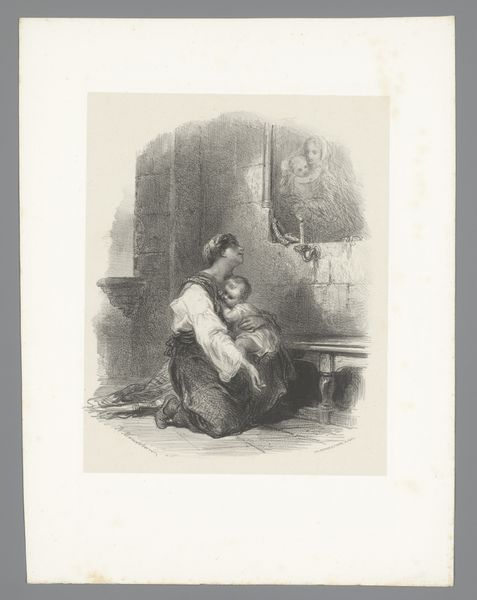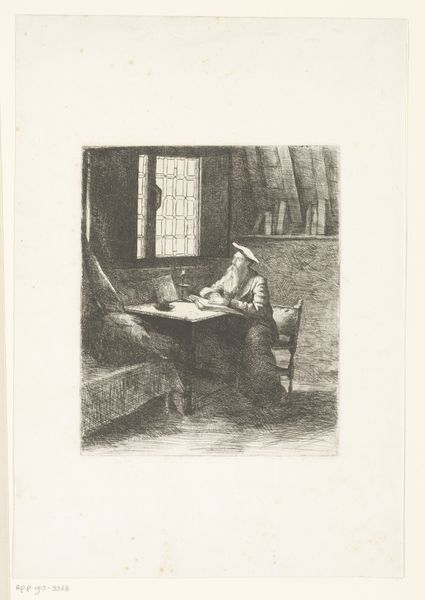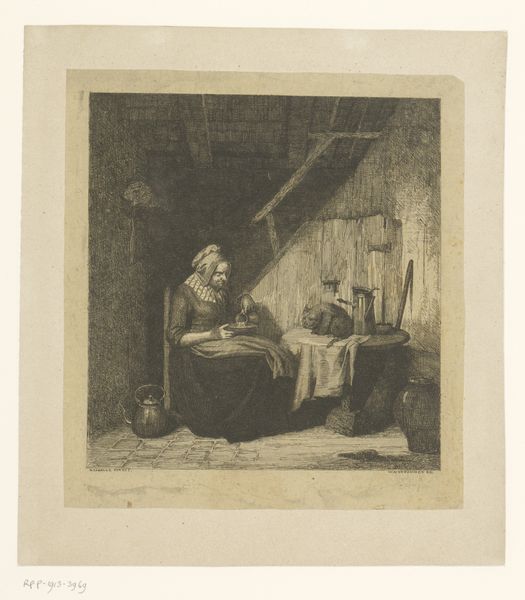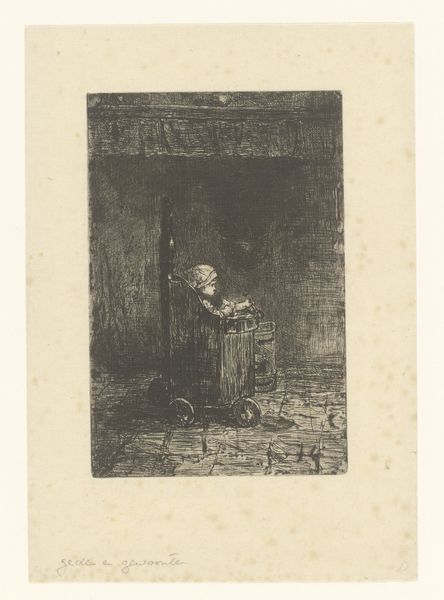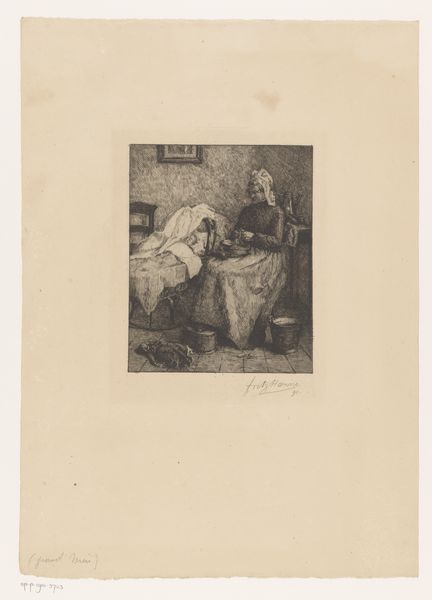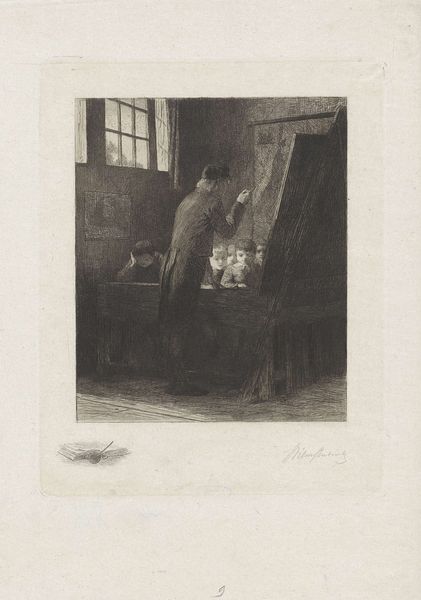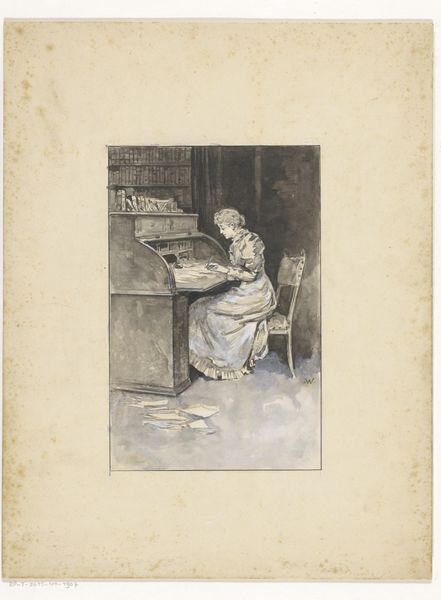
drawing, print, etching, paper
#
portrait
#
drawing
#
ink paper printed
# print
#
etching
#
figuration
#
paper
#
genre-painting
Dimensions: height 401 mm, width 313 mm
Copyright: Rijks Museum: Open Domain
Curator: This etching, titled "Dame drinkt in een atelier uit een glas," or "Lady drinking in a studio from a glass," was created by Florimond Buyck before 1909. Editor: It has a melancholy air to it. The tones are muted, almost sepia, giving the scene a quiet intimacy despite its almost documentary feel. Curator: Precisely. It’s a genre scene depicting a woman in what appears to be an artist's studio, identifiable by the canvases stacked against the wall. We should examine the socio-cultural elements it presents. This subject places value on the representation of a working woman as a reflection of contemporary social realism and class dynamics. Editor: And the act of drinking in that setting…was that normalized? Where does that social allowance appear publicly? It presents such interesting juxtapositions of freedom within defined working class limits. Considering that this etching has survived well into the 21st century… It really brings into focus questions about class, representation, and what's considered acceptable public social actions in a time when those norms were really being contested. Curator: The use of etching as the printmaking technique further adds a layer to that analysis. Consider the skill involved and how prints democratized art consumption. It was not simply a study of material; it became a cultural marker of accessibility. Editor: You know, the light is incredibly effective despite the dark tonality, it guides our eye. But it strikes me that the glass is nearly as important a focal point as the woman’s face—do you think that might symbolize the visibility of working-class life and struggles within Belgium at the time? It has such clarity of presence as a representation, rather than only just an incidental feature. Curator: I agree. And that Buyck chose this scene and etching technique gives the audience not only access but social commentary on the society of labor through printed editions, rather than painted canvas. It speaks volumes. Editor: An unexpected glimpse into the everyday. Curator: Precisely. It provides a lens through which to understand production and distribution within the late 19th, early 20th century Belgian society and the role the artist plays as documentarian, in this print format.
Comments
No comments
Be the first to comment and join the conversation on the ultimate creative platform.
